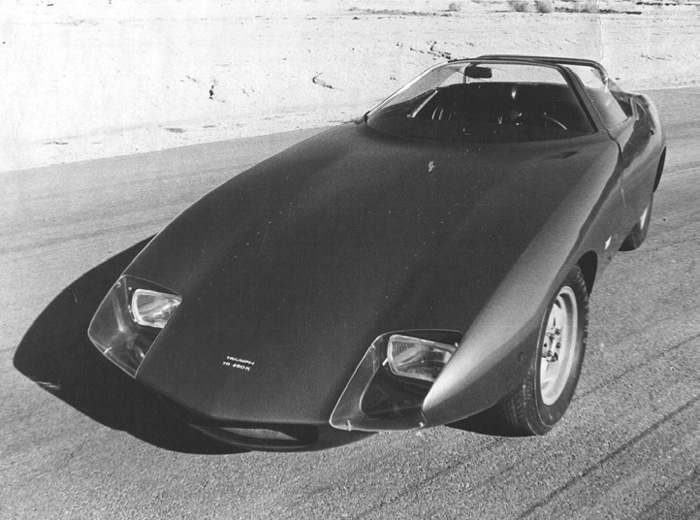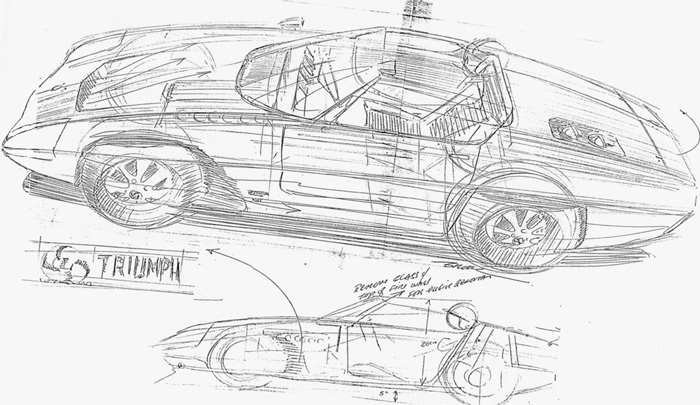-
Administrator

Article: Triumph TR-250K

“Peter had finished his design work at Shelby American”, explains R. W. “Kas” Kastner, “and was looking for an effort that would show his ability. I was looking for a chance to show off the name Triumph”. The ‘Peter’ Kas is referring to is Pete Brock, the youngest designer ever hired at General Motors Styling Division when he joined the company at age 19. In 1957, he penned the shape for what would ultimately become the Corvette Stingray, eventually released in 1963, by which time Brock was working for Carroll Shelby, initially running his driving school (he was actually Shelby’s first-ever employee), before switching to, and helping create the Shelby American brand, as Carroll Shelby went into production building the AC/Shelby Cobra.
Although Pete Brock’s earlier roles at Shelby leaned more towards marketing, through designing logo’s, liveries, advertisements, and the like, he would eventually go on to design the highly successful Daytona Cobra Coupes which raced during 1964/65, before branching out on his own in late ’65 to form Brock Racing Enterprises (BRE). By the early 1970s, BRE were running the factory Datsun team in SCCA Trans-Am and C/Production Sports, but the intervening years saw work with Hino and Toyota, using motor sport as one of the key areas to help build their brands in the US.
“Anyway, we bantered on and on about this car several hours every week, on the phone, running cars on my slot track and just hanging around. It was never something that had a direct aim at the time nor was there any device to see it happen. It was always just bench racing talk. Then it happened.
“As Competition Manager for Triumph in the USA, I was sent or was called to Coventry England on many occasions. One Thursday, the call came. We'd like you to be here on Monday. I checked my passport and found it had only a week before expiration so I had to make a deal in downtown LA to get that renewed, make the reservations and gather my wits and wish lists.

“I called Peter on the phone and told him I was leaving for Coventry. If he could get me a sketch of the car we were talking about I'd make a stand at trying to not only get permission to build it, but also to try and find some budget. In fact the time element was so short that Pete only had about an hour to not only do the sketch but to get it to me in my office in Gardena, California 'cause I was going to be on a plane that AM.
“In about forty-five minutes Peter Brock rolled up to the Triumph offices in Gardena and handed me a rolled up sketch on heavy paper about 18" by 11". I unrolled the paper and saw this really neat sketch of the OUR CAR”. The result of Pete Brocks creative juices was a concept so striking, it could have leapt straight from the screen of the ‘60s Japanese originating cartoon tv series Speed Racer. For a company whose designs still retained a hint of their cottage industry roots (and which many of their customers still expected), this was a world away from their standard fare, and quite futuristic. Heavy emphasis was placed on aerodynamics, or, more specifically, of slipping through the air far more efficiently than a standard TR model. But overall the design was one that embraced the future, not the past.
 Posting Permissions
Posting Permissions
- You may not post new threads
- You may not post replies
- You may not post attachments
- You may not edit your posts
-
Forum Rules






 Reply With Quote
Reply With Quote